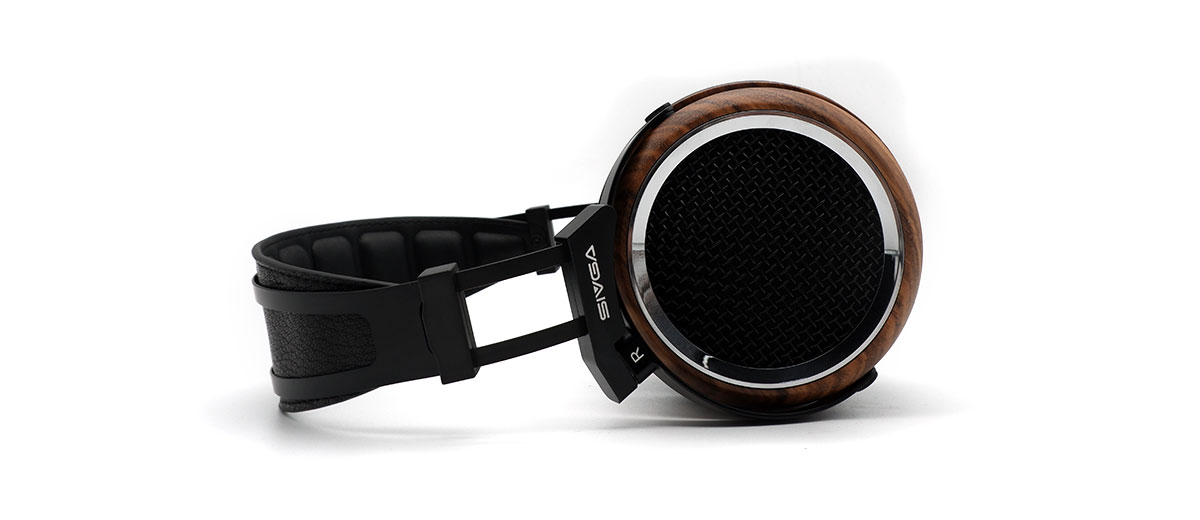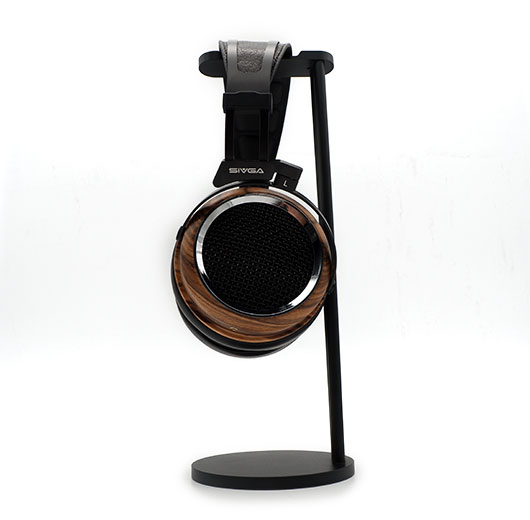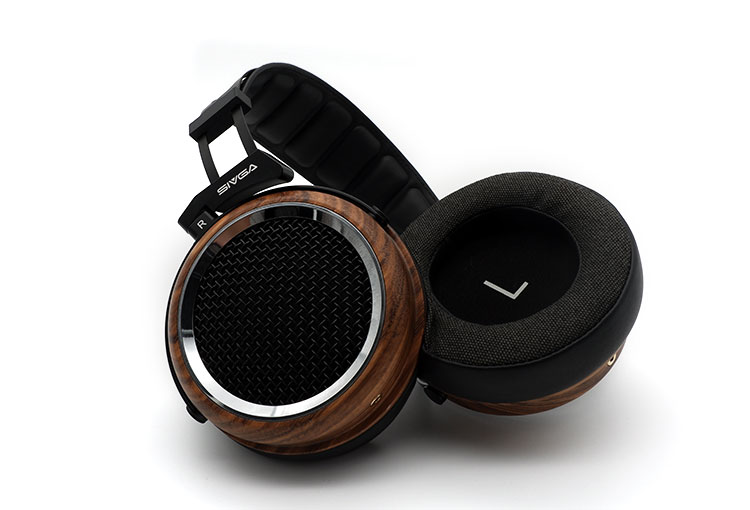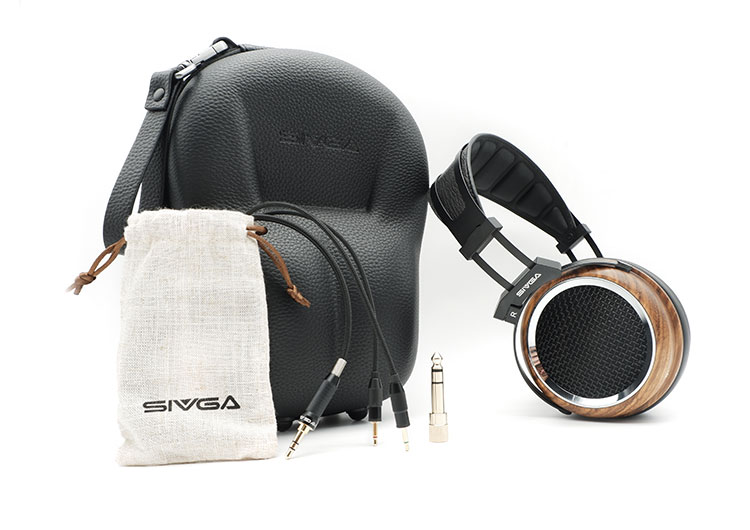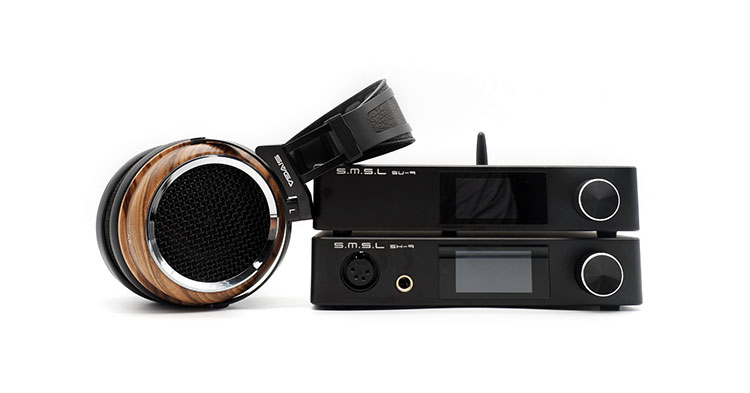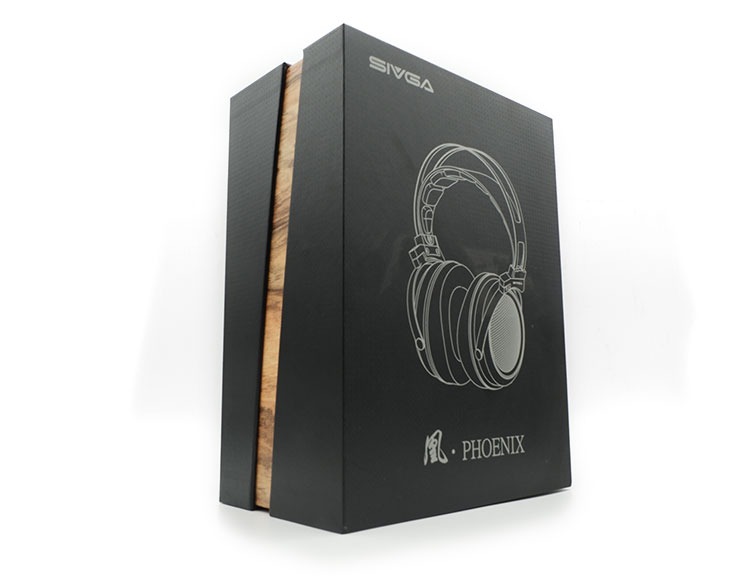The SIVGA Phoenix is an open-back circumaural dynamic driver headphone using a 50mm Polycarbonate Film dynamic driver. It is priced at $255.
Disclaimer: The SIVGA Phoenix was sent to us as a sample in exchange for our honest opinion in this review. We thank SIVGA for this opportunity.
To learn more about headphones reviewed on Headfonics you can click here.
Note, this review follows our new scoring guidelines for 2021 which you can read up on here.
When I was looking at the SIVGA headphones, I always thought that their headphones look very similar to gear being made by Sendy Audio. It turns out, they are the same company, and both companies have caught the attention of many headphone enthusiasts as of late.
SIVGA is a company that has been operating out of Dongguan, China since 2016. One of the most popular models under the SIVGA brand is their SIVGASV-007.
Since its launch, the company has launched numerous headphones, including the Aiva that we’ve had the privilege to review 2 years ago. Just recently, SIVGA launched their new open-back dynamic driver, the SIVGA Phoenix, which we’re taking a look at in this review.
Tech Highlights
Materials
The SIVGA Phoenix is manufactured using a combination of zebrawood, and aluminum. The combination of these materials ensures that the headphone is light but durable.
The aluminum headband is processed with the latest CNC techniques to ensure a quality finish without any rough edges. Finally, the aluminum and the wood are supplemented by a suspension headband strap and hybrid earpads to ensure an ergonomic fit.
Much care was put into the design of the headphone itself, and the same attention to detail has been put into the design of the cable on the Phoenix. The cable comes with oxygen-free copper and a cloth coating to protect the cables.
Driver
The drivers inside each earcup are also specifically designed in-house with a 3mm thick high-performance rubidium iron boron magnet to provide more magnetic flux.
The voice coil in each speaker is made of a copper-clad aluminum wire which is light, to ensure higher sensitivity and a wide dynamic range. Finally, the diaphragm is made of a uniquely developed polycarbonate structure that prevents any deformations as the diaphragm moves.
In front of the box, there is a Chinese character 凰, which means Phoenix. In the Chinese tradition, the Phoenix is a popular character used to represent harmony. It is with this in mind that SIVGA came up with the tuning for the Phoenix, with a “suitable bass”, “natural mids/vocals” and a “crisp detailed treble”.
Design
The headphone itself is built with generally sturdy materials. The headband is made of aluminum and is CNC milled to ensure a smooth finish. The end of the aluminum headband arc is connected to a plastic gimbal that enables a degree of earcup rotation. The markings for left and right can also be found on the gimbals.
The Phoenix is equipped with a suspension strap system that can be adjusted with a slide mechanism that smoothly slides along the headband. The suspension strap is made of 2 layers of leather with some foam in between, and the strap is finely stitched and finished allaying my fears of possible fraying down the road.
The earcups are made of zebrawood, with painted stainless-steel grills. Each earcup has a 2.5mm TS cable entry that is just surface mounted on the earcups, so most aftermarket plugs will be compatible.
The earpads are made of memory foam covered with leather on the outside and inside of the ring, while the part that touches my head is covered in cloth.
The pads are attached to the headphone with a 3 point clip mechanism that allows the user to easily replace the earpads with a twist, so it won’t be that difficult to replace the earpads when they wear out, or if there are aftermarket earpads.
Stock Cable
The cable that comes with the Phoenix is a crystalline copper cable with cloth shielding. Despite having a cloth outer shield, the cable is surprisingly soft and free of microphonics. While the cable is quite long for portable use at 1.6m, the open-back nature of the Phoenix would steer most users to desktop use where a 1.6m cable fits in quite nicely.
The cable is terminated with 2.5mm mono jacks on the headphone side with knurled aluminum plugs for a better grip. All the plugs themselves are color-coded, while each plug is marked with R & L to distinguish from the left and right connector.
The splitter is small but seemingly quite robust. At the other end is a 3.5mm TRS termination with a knurled aluminum plug finished with a spring strain relief.
Comfort & Isolation
With the weight of the Phoenix being listed as 296g, it’s undoubtedly on the lighter side for a pair of full-sized set of headphones. When they are worn, they feel as light as they are listed, and the little weight is distributed well by the suspension strap.
The headband swivel, as well as the earpads’ memory foam, ensure that the Phoenix will fit nicely with most heads. The clamping force on the Phoenix is on the lighter side right out of the box, but the way that the earpads conform to my head ensures that they stay in place properly.
The earpads themselves have a cloth portion that touches the sides of my head, and they don’t become uncomfortable even when I start to listen for hours in a warmer room. The opening of the earpads is on the slightly smaller side though, since my ears barely fit inside, but they still seal well around my ears.
With the open-backed nature of the Phoenix, they don’t isolate themselves from the outside world. When there is no music playing, I can clearly hear whatever is going on around me. However, it’s interesting to note that there isn’t much sound leak even when I’m listening at a comfortable volume level.
Package & Accessories
The box that the Phoenix comes in is a black box, that opens from the top. The box is lined with foam inserts that protect the headphone carrying case.
The case is molded to the exact dimensions of the Phoenix, which ensures that the headphones won’t be moving around too much inside the carrying case. Inside the carrying case are the headphones, the cables, and a 3.5mm to ¼” adaptor.
While the accessories are simple, it’s well thought of and will ensure that you’re ready to go right out of the box. The box itself is also nicely designed to ensure that the headphone will arrive to you in perfect condition.
Sound Impressions
Bass
While the Phoenix is generally a balanced sounding headphone, the bass that it produces is quite impressive. The sub-bass region is immediately apparent but with a somewhat ambient feeling to it.
Sub-bass notes don’t feel like they emanate from a single point source, instead, it sounds like it floods the entire soundscape. There is a mid-bass hump, but it will not overshadow any of the other frequencies.
The bass that the Phoenix produces is textured and well-controlled. Drum hits have a slightly hollow quality, while still having a very impactful sense of attack, and a natural level of decay. Bass guitars on the other hand have a flowy, and rich sound to them, while still having a textured and rounded presentation to them.
Most of the bass region is on the thicker side, but it retains a good harmonic balance with the rest of the frequency spectrum.
Midrange
While the Phoenix is generally balanced, the midrange is marginally more recessed when compared to the bass region. The vocal range is on the leaner side, which makes vocals a bit more pushed back.
Although there is a good amount of vocal texture, there is a slight veil in the male vocal range when compared to the rest of the frequency spectrum. Male vocals still have a natural euphonic quality but with a thinner character.
Guitars on the other hand sound very clear and singular when there are strings that are being plucked individually. Similarly, pianos also sound very articulate and striking when individual notes are being played.
However, in more complicated passages, there is that veil similar to the vocal range. Acoustic instruments tend to have a bright tilt, but still have a sweetness to them at the same time.
Treble
Compared to the bass, the treble on the Phoneix is a bit more faded but does have a bit more presence compared to the midrange. This uptick in the treble range imbues most acoustic instruments with a brighter timbre and a bit more brilliance.
Cymbal hits with the Phoenix are very precise, and crisp, with a good amount of attack. The decay of each percussive strike is also very natural, giving cymbals the appropriate amount of shimmer while retaining control over the treble range.
The treble on the Phoenix is extended quite well, where there is a good sense of airiness. However, SIVGA made sure that the airiness doesn’t get in the way of enjoyment, which makes the Phoenix a headphone that’s on the safer side of bright, but still quite pleasant and energetic, never fatiguing.
Staging
One of the things that can easily be noticed with the Phoenix is that it’s a surprisingly open headphone, despite the lack of sound leakage.
The sound that comes through when no music is playing is strikingly clear, which seems to translates to a very open soundstage. Laterally, the images that are formed are quite wide, there seems to be an enveloping sound field around my head with the Phoenix.
However, when it comes to creating a center image, the Phoenix’ center image is a bit larger than what I would typically expect. The center image is also not quite pushed forward, but still beyond my nose, so it still feels natural, but not as wide as the lateral direction.
The images formed by the Phoenix are quite clear, and the placement is very accurate. Layering within the soundstage is more diffuse, however. The size of the image created by the Phoenix is on the larger side, so the soundscape is filled out quite well. However, the vividness of the image may lack some definition at times.
Synergy
Efficiency
It’s tempting to run the Phoenix off a phone and call it a day because of the 32Ω impedance and 103dB SPL sensitivity rating. Of course, they’re easy enough to drive to run them off of a phone, but it would be wasting the potential of the Phoenix if they’re limited to a weak source.
Portable
When listening to the Phoenix through various dedicated audio sources, the Phoenix easily magnified the strengths of the upstream gear that it is connected to. When I moved up from my Xiaomi Redmi Note 9 Pro and plugged in my trusty Dragonfly Red, there is a marked improvement in the clarity and sweetness of the treble from the Phoenix.
Desktop
Moving to a full desktop setup, such as the SMSL SU-9/SH-9 stack, the Phoenix started sounding a bit more impactful.
Finally, I tested the Phoenix on my main desktop rig, which is currently composed of my Chord 2qute and my Burson Soloist 3X. This setup gave the Phoenix even more bass impact while showcasing the Phoenix’ controlled but textured bass presentation.
With the impedance and sensitivity figures of the Phoenix, it’s tempting to just run it off anything that has a 3.5mm headphone jack. It’s important to note though that the Phoenix can easily magnify the quality of the source, so having a good quality source is a necessity if you want to bring the most out of the Phoenix.
Select Comparisons
Sennheiser HD600
Technical
The HD600 is a headphone that I’ve held on to since almost the beginning of my audiophile journey. While both headphones have dynamic drivers, the power requirements of the 2 headphones are markedly different. With an impedance of 300Ω and a rated sensitivity rating of 97dB, it needs a much stronger voltage swing compared to the Phoenix’ 32Ω/103dB ratings.
While the Phoenix can comfortably be driven off any source to a listenable volume, the HD600 requires at least a desktop amplifier to be run properly.
The connector on the HD600 hasn’t changed its inception in the early ’90s, which is a 2-pin proprietary connector being used in the 600 series of headphones from Sennheiser. The Phoenix on the other hand uses a 2.5mm connection. Both connectors are fairly common, so getting aftermarket cables for either headphone is quite easy.
While the HD600 is still priced at around $400 in the current market, the accessories that come with the HD600 are simpler than the ones that come with the Phoenix.
The HD600 typically comes with just the cable and a ¼” adaptor, and that’s it. No carrying case, or any other extras, while the Phoenix came with a nice carrying case and a small drawstring bag for the cables.
Performance
The HD600 and the Phoenix are very contrasting headphones. The Phoenix reaches deep down into the sub-bass region, where there is an ethereal, and ambient sub-bass quality that seems to just spread throughout the entire soundstage. The mid-bass on the other hand is equally dynamic and impactful, however, the HD600 has a touch more mid-bass presence and texture.
For the vocal range, it’s immediately apparent that the HD600 has a more planted fundamental frequency with more euphonic harmonic overtones. Acoustic instruments such as guitars and pianos also retain that euphonic and sweet character, in contrast to the brighter and thinner character that these instruments take on with the Phoenix.
In simpler passages, both headphones display textures in the midrange very well. However, in more complicated passages, the HD600 displays textures a bit more clearly.
While the HD600 is not treble shy, the treble presentation on the Phoenix is more forward. Cymbal hits are just more crisp on the Phoenix, and each percussive strike is just a bit more energetic on the Phoenix. Furthermore, the Phoenix is also a bit more extended in the treble range.
The Phoenix soundstage presentation is much more expansive than the traditionally intimate HD600. While both don’t feel congested in any way, the Phoenix simply has a different level of expansiveness. Image clarity is comparable on the 2, however, the HD600 creates a more vivid and textured image within its smaller soundstage.
Austrian Audio Hi-X55
Technical
The Austrian Audio Hi-X55 is a closed-back dynamic driver monitoring headphone, at $329, it’s more expensive than the Phoenix, but the comparisons between the 2 are quite interesting.
The Hi-X55 is a headphone that’s equipped with a 44mm dynamic driver, where the 44mm size was a deliberate attempt of the Austrian Audio team to prevent the drivers from wobble. The Phoenix on the other hand is designed with a 50mm dynamic driver.
Interestingly, both headphones make use of a 2.5mm connector on the headphone side. However, the Hi-X55 uses a single-sided entry system with a 2.5mm TRS bayonet connection system, while the Phoenix uses a dual-sided entry.
This means that the Phoenix can be flexible in terms of accepting a balanced connection if the cable is replaced, while the Hi-X55 would require extensive modifications if balanced connections are absolutely necessary.
With an impedance of just 25Ω and a sensitivity of 118dB/mW, I assumed that the Hi-X55 should require less power to drive. However, I was surprised that the Phoenix is still easier to drive than my Hi-X55, where there was an 8 notch difference between the 2 Hi-X55 and the Phoenix when they are driven off of my Burson Soloist 3X at a medium gain.
Aesthetics
Aesthetically, the Hi-X55 looks more like a tool with mostly metal parts and intelligently designed hard plastic edges. The Phoenix on the other hand seems more like a work of art, with the wood ear cups and the more contrasting colors on the headphone.
The Hi-X55 is equipped with smaller drivers, but it’s surprising to see that the earcups on the Hi-X55 are larger than the ones on the Phoenix. The earcups on the Hi-X55 are oval, with thin-walled leather ear pads which leave more space inside the earpad holes. With the Hi-X55, my ears are always inside earpad holes, while my ears usually touch the walls of the earpads on the Phoenix.
Performance – Bass & Mids
When it comes to the sub-bass response, the Hi-X55 and the Phoenix are actually quite similar. They can both reach down deep, but the Phoenix has a more environmental feel when it comes to its sub-bass response.
The mid-bass is a bit more forward on the Phoenix, and in comparison to the Hi-X55, the Phoenix has a bit of a mid-bass bloom. Although both headphones have a good amount of bite, the Hi-X55 has a touch more control over the bass region, but both headphones are enjoyable in that respect.
While the Hi-X55 is not a mid-range centric headphone, the vocal range sounds thicker than the Phoenix’ more recessed vocal range. Although neither of the 2 headphones presents a particularly euphonic vocal character, the Hi-X55 has an overall sweeter vocal presentation.
Acoustic instruments like guitars and pianos also have a more plated fundamental tone on the Hi-X55. The instruments have a bit more body, and the strums and hollowed character of guitars, or cellos just shine through a bit more with the Hi-X55. Both headphones give acoustic instruments a bit of a brighter tilt though.
Performance – Highs
Treble frequencies are elevated on both headphones, but more so with the Hi-X55. While the Phoenix has a safer treble tuning, the Hi-X55 is distinctly more energetic in the treble frequencies. Control over the treble region is about equal on both though, where the cymbal hits have a crisp and crystalline character to them.
When it comes to listening to classical music, where there are gentler passages, and engaging emotional crescendos, the Hi-X55 simply draws me in deeper into the music. While the Phoenix can still do well with gentler passages, the Hi-X55 just has that more refined touch when it comes to playing those silent passages.
Performance – Staging
With the closed-back nature of the Hi-X55, the Phoenix soundstage feels much more expansive than the Hi-X55. Both headphones can accurately present image directionality, however, when it comes to the quality of imaging, the Hi-X55 can cast a more accurate image within the soundscape.
Our Verdict
When I received the Phoenix, I first thought that it was peculiar to call a headphone by that name. But according to Chinese tradition, the symbolism of Phoenix(凰) means harmony, and I can now see why SIVGA decided to name it such.
Each aspect of the headphone is balanced, the headphone is well built, but still manages to be light and comfortable. The tonality has a slight bass emphasis, but it’s supplemented with an energetic treble and a marginally recessed but textured midrange. The soundstage is wide but remains immersive because of larger images layered within the soundscape.
Harmony is a key aspect of the design of the Phoenix, and it’s clearly seen in how it’s tuned and built.
SIVGA Phoenix Specifications
- Style: Over-Ear
- Transducer Type: Dynamic Driver
- Driver Diameter: 50mm
- Sensitivity: 103 dB±3 dB
- Impedance: 32Ω±15%
- Frequency response: 20 Hz-20 kHz
- Plug: 3.5mm
- Cable Type: Removable 3.5mm
- Color: Zebrawood
- Weight: 296 g

